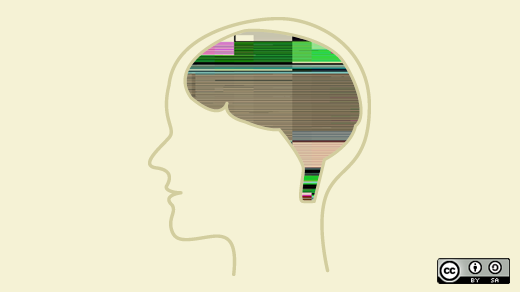Though open source is thoroughly mainstream, new software technologies and old technologies that get newly popularized sometimes inspire hand-wringing about open source licenses. Most often the concern is about the GNU General Public License (GPL), and specifically the scope of its copyleft requirement, which is often described (somewhat misleadingly) as the GPL’s derivative work issue.
One imperfect way of framing the question is whether GPL-licensed code, when combined in some sense with proprietary code, forms a single modified work such that the proprietary code could be interpreted as being subject to the terms of the GPL. While we haven’t yet seen much of that concern directed to Linux containers, we expect more questions to be raised as adoption of containers continues to grow. But it’s fairly straightforward to show that containers do not raise new or concerning GPL scope issues.
Statutes and case law provide little help in interpreting a license like the GPL. On the other hand, many of us give significant weight to the interpretive views of the Free Software Foundation (FSF), the drafter and steward of the GPL, even in the typical case where the FSF is not a copyright holder of the software at issue. In addition to being the author of the license text, the FSF has been engaged for many years in providing commentary and guidance on its licenses to the community. Its views have special credibility and influence based on its public interest mission and leadership in free software policy.
The FSF’s existing guidance on GPL interpretation has relevance for understanding the effects of including GPL and non-GPL code in containers. The FSF has placed emphasis on the process boundary when considering copyleft scope, and on the mechanism and semantics of the communication between multiple software components to determine whether they are closely integrated enough to be considered a single program for GPL purposes. For example, the GNU Licenses FAQ takes the view that pipes, sockets, and command-line arguments are mechanisms that are normally suggestive of separateness (in the absence of sufficiently "intimate" communications).
Consider the case of a container in which both GPL code and proprietary code might coexist and execute. A container is, in essence, an isolated userspace stack. In the OCI container image format, code is packaged as a set of filesystem changeset layers, with the base layer normally being a stripped-down conventional Linux distribution without a kernel. As with the userspace of non-containerized Linux distributions, these base layers invariably contain many GPL-licensed packages (both GPLv2 and GPLv3), as well as packages under licenses considered GPL-incompatible, and commonly function as a runtime for proprietary as well as open source applications. The "mere aggregation" clause in GPLv2 (as well as its counterpart GPLv3 provision on "aggregates") shows that this type of combination is generally acceptable, is specifically contemplated under the GPL, and has no effect on the licensing of the two programs, assuming incompatibly licensed components are separate and independent.
Of course, in a given situation, the relationship between two components may not be "mere aggregation," but the same is true of software running in non-containerized userspace on a Linux system. There is nothing in the technical makeup of containers or container images that suggests a need to apply a special form of copyleft scope analysis.
It follows that when looking at the relationship between code running in a container and code running outside a container, the "separate and independent" criterion is almost certainly met. The code will run as separate processes, and the whole technical point of using containers is isolation from other software running on the system.
Now consider the case where two components, one GPL-licensed and one proprietary, are running in separate but potentially interacting containers, perhaps as part of an application designed with a microservices architecture. In the absence of very unusual facts, we should not expect to see copyleft scope extending across multiple containers. Separate containers involve separate processes. Communication between containers by way of network interfaces is analogous to such mechanisms as pipes and sockets, and a multi-container microservices scenario would seem to preclude what the FSF calls "intimate" communication by definition. The composition of an application using multiple containers may not be dispositive of the GPL scope issue, but it makes the technical boundaries between the components more apparent and provides a strong basis for arguing separateness. Here, too, there is no technical feature of containers that suggests application of a different and stricter approach to copyleft scope analysis.
A company that is overly concerned with the potential effects of distributing GPL-licensed code might attempt to prohibit its developers from adding any such code to a container image that it plans to distribute. Insofar as the aim is to avoid distributing code under the GPL, this is a dubious strategy. As noted above, the base layers of conventional container images will contain multiple GPL-licensed components. If the company pushes a container image to a registry, there is normally no way it can guarantee that this will not include the base layer, even if it is widely shared.
On the other hand, the company might decide to embrace containerization as a means of limiting copyleft scope issues by isolating GPL and proprietary code—though one would hope that technical benefits would drive the decision, rather than legal concerns likely based on unfounded anxiety about the GPL. While in a non-containerized setting the relationship between two interacting software components will often be mere aggregation, the evidence of separateness that containers provide may be comforting to those who worry about GPL scope.
Open source license compliance obligations may arise when sharing container images. But there’s nothing technically different or unique about containers that changes the nature of these obligations or makes them harder to satisfy. With respect to copyleft scope, containerization should, if anything, ease the concerns of the extra-cautious.







Comments are closed.